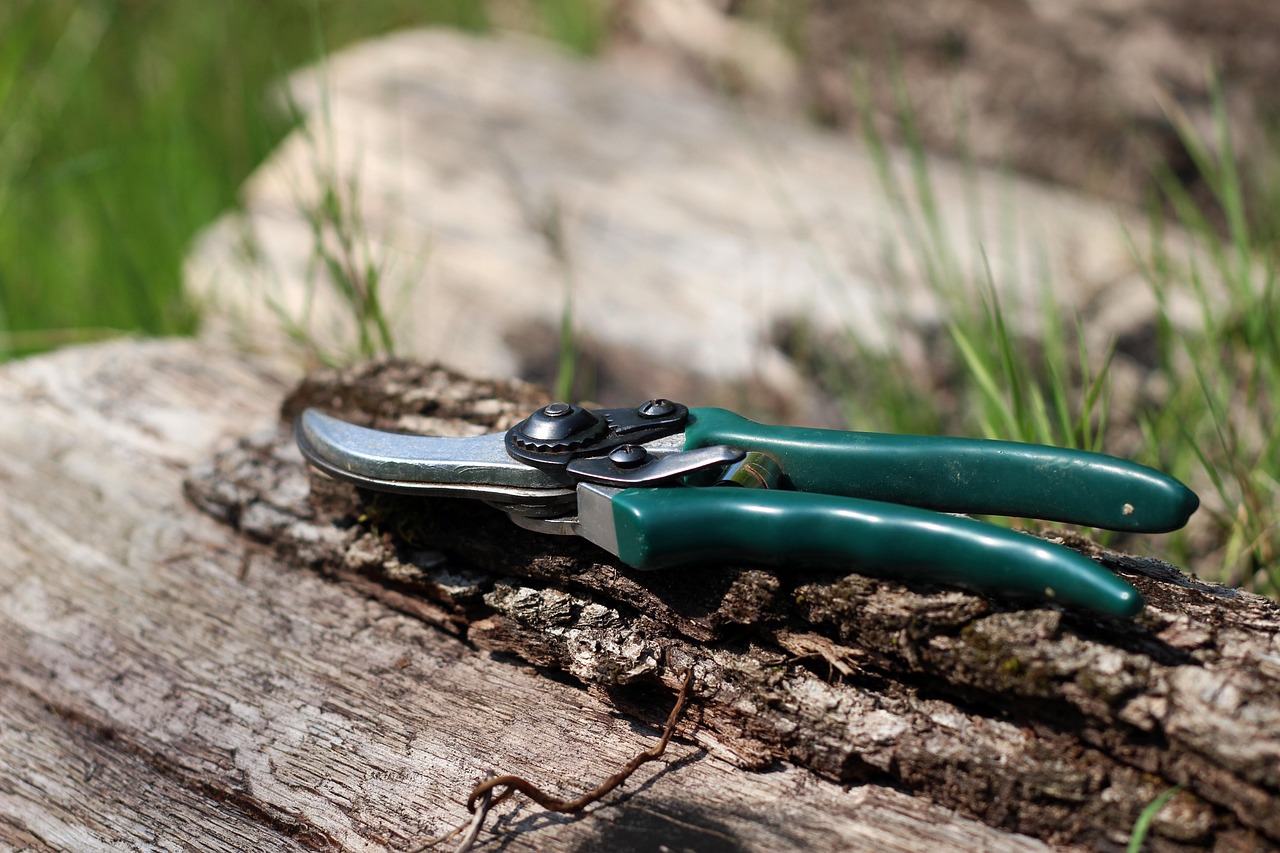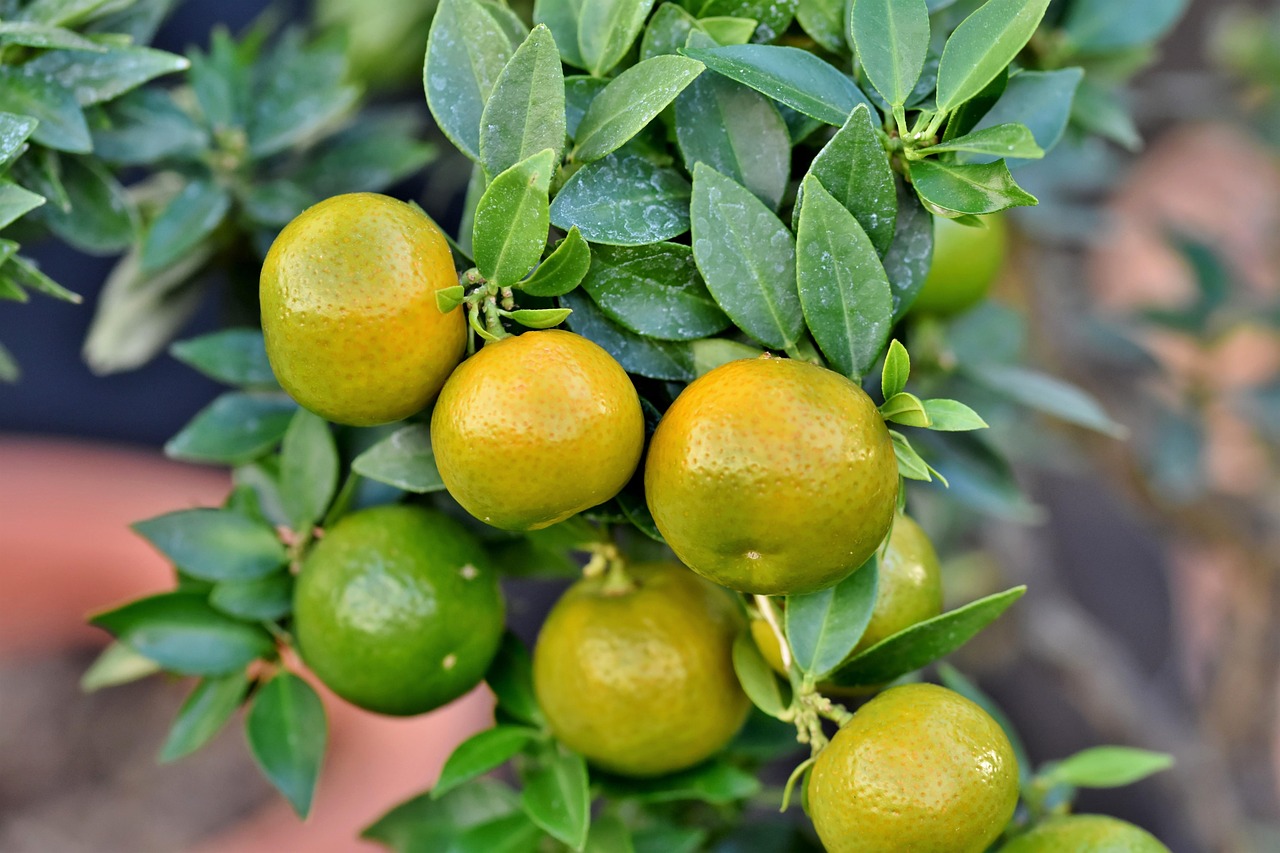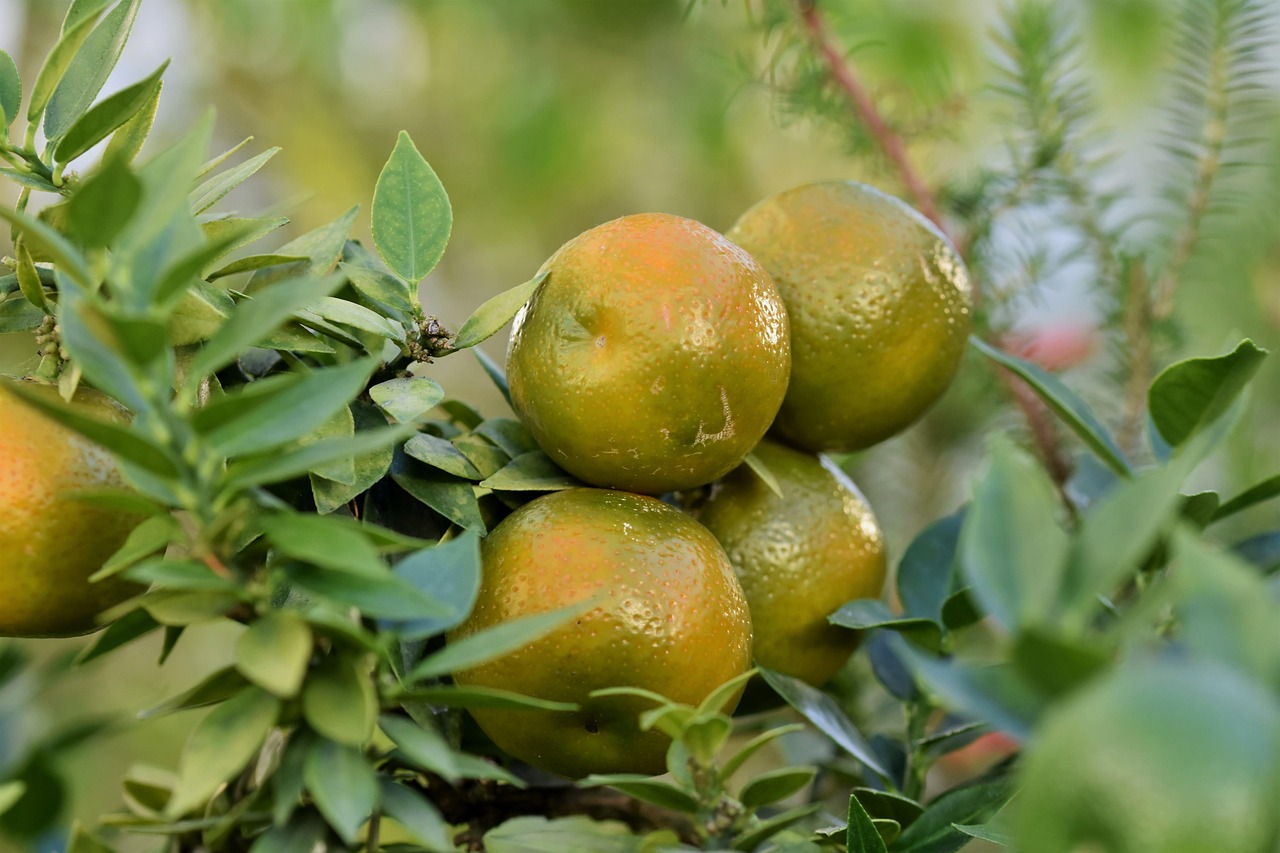Pruning grapefruit trees is essential for promoting juicier and sweeter fruits. Proper pruning techniques help increase sunlight exposure, improve air circulation, and remove dead or diseased branches. This results in healthier trees and better fruit production.
Grapefruit trees are popular among home gardeners and commercial growers alike. Known for their tangy flavor and vibrant color, grapefruits thrive in warm climates with plenty of sunlight. While these trees are relatively low-maintenance, regular pruning is crucial for their health and productivity. Effective pruning encourages better fruit quality and can significantly enhance the overall growing experience.

Understanding the importance of pruning is the first step toward cultivating healthier grapefruit trees. Pruning helps in several ways:
- Improves fruit quality by allowing better light penetration.
- Encourages air circulation, reducing the risk of disease.
- Removes unwanted or competing branches that hinder growth.
- Shapes the tree for easier harvesting.
Why Prune Grapefruit Trees?
Pruning grapefruit trees serves multiple purposes. First, it helps manage the size and shape of the tree. This is especially important in home gardens where space may be limited. A well-shaped tree is not only easier to maintain but also more visually appealing.
Additionally, pruning is essential for increasing fruit yield and quality. By selectively removing branches, you allow the tree to focus its energy on producing fewer but more substantial fruits. This can lead to juicier and sweeter grapefruits, which are more enjoyable to eat and sell.

| Benefit of Pruning | Description |
|---|---|
| Enhanced Light Exposure | Pruning opens up the canopy, allowing sunlight to reach all parts of the tree. |
| Better Airflow | Improved air circulation minimizes humidity and reduces the risk of fungal diseases. |
| Reduced Competition | Removes competing branches to enhance growth on the remaining ones. |
| Improved Accessibility | Easier to harvest fruits when the tree is well-shaped and maintained. |
Another key reason for pruning is to maintain tree health. Dead or diseased branches can be a source of infestation and disease spread. Removing these branches promptly can help protect the entire tree. Additionally, keeping your grapefruit tree pruned can prevent issues related to overcrowding, which might lead to stunted growth or poor fruit development.
The best time to prune grapefruit trees is during their dormant season, typically late winter or early spring before new growth begins. This timing ensures minimal stress on the tree and promotes rapid recovery as the growing season commences. It is essential to use clean and sharp tools to avoid damaging the tree and to prevent the transmission of diseases.
Pro-Tips and Mistakes I Learned the Hard Way
- When I first started pruning, I over-pruned my tree thinking I was helping. Turns out, removing too much at once stressed the tree and reduced fruit yield. Now, I limit myself to about 20% of the canopy each year—and I assess carefully before cutting.
- In the beginning, I ignored signs of disease on branches. I learned that catching issues early and removing diseased wood prevents spread and keeps the whole tree healthier.
- At first, I used dull pruning tools because I thought it didn’t matter. I quickly realized sharp, clean tools make smoother cuts that heal faster—preventing pests and diseases from sneaking in.
- When I neglected to prune during dormancy, I noticed my trees struggled to recover. Now, I prune late winter or early spring to minimize stress and give the tree time to bounce back.
- I used to prune randomly without a plan, but I’ve found that understanding which branches cross, are dead, or overcrowded makes a big difference. Targeted pruning improves airflow, light, and fruit quality.
- Initially, I thought pruning was only about removing branches—but I learned it’s also about shaping the tree to make harvesting easier and keeping it healthy for years to come.
- One mistake I made was not disinfecting my tools after each cut. Now, I always disinfect with alcohol or bleach to prevent disease transmission.
- Finally, I used to ignore the seasonal timing, pruning at the wrong time. Making sure to prune during the right season ensures my grapefruit trees stay healthy, productive, and less stressed.
Essential Pruning Techniques
There are various techniques to consider when pruning grapefruit trees. Each method has its purpose and application, depending on the desired outcome for the tree’s shape, health, and fruit production.

Thinning
Thinning involves removing entire branches or shoots from the tree. This technique helps reduce overcrowding within the canopy. By thinning branches, you allow more light and air to penetrate, which is vital for fruit development. This method is particularly useful for older trees that may have become bushy over time.
Heading Back
Heading back is another common technique where you cut a stem back to a bud or branch. This encourages new growth from that point, leading to a bushier appearance. Heading back can be beneficial for younger trees that require shaping or for encouraging lateral growth.
Shearing
Shearing involves trimming the outer growth of the tree to create a uniform shape. While this method can make a tree look neat, it should be used sparingly. Over-shearing can damage the tree’s health by removing too many leaves, which are essential for photosynthesis.

Incorporating these techniques into your grapefruit tree care routine will enhance your ability to produce sweeter and juicier fruits. As you continue to learn about grapefruit tree pruning, you will develop your skills and improve your overall gardening experience.
Tools and Equipment for Pruning
Having the right tools is essential for effective grapefruit tree pruning. Using appropriate equipment not only makes the job easier but also ensures clean cuts that promote healthy growth. Here are some of the necessary tools and their functions:
- Hand Pruners: Ideal for small branches and precise cuts. These are essential for detailed work.
- Loppers: Used for larger branches that are too thick for hand pruners. They provide extra leverage.
- Pruning Saw: Useful for cutting thicker limbs. A sharp pruning saw will make cleaner cuts.
- Gloves: Protect your hands from thorns and sharp branches while pruning.
- Safety Glasses: Protect your eyes from debris that may fly while cutting.
Before starting the pruning process, ensure all tools are clean and sharp. This prevents the spread of disease and allows for easier cutting. Disinfecting tools with rubbing alcohol or a bleach solution can help maintain hygiene.
When to Prune Grapefruit Trees
The timing of your pruning is crucial for the health and productivity of your grapefruit tree. Although late winter to early spring is generally the best time to prune, it is essential to consider the specific growth habits and local climate conditions.
Seasonal Considerations
Here are some seasonal factors to keep in mind when planning your pruning schedule:
- Winter Dormancy: Pruning during dormancy helps reduce stress on the tree. At this time, the tree is not actively growing, making it easier to manage.
- Spring Growth: As new growth begins, it’s beneficial to prune right before this phase. This encourages the tree to focus its energy on new shoots and fruit development.
- Summer Maintenance: Light pruning can be performed during summer to remove any dead or diseased branches that become apparent as the tree grows.
- Fall Preparations: Avoid heavy pruning in late summer or fall, as this can stimulate new growth that may not harden off before winter.
Pruning Techniques for Different Tree Ages
The age of your grapefruit tree significantly influences the pruning techniques you should use. Younger trees require different approaches compared to mature trees. Understanding this can help you make more informed decisions in your gardening practices.
Young Trees
For young grapefruit trees, the primary goal is to establish a strong structure. Here are some recommended practices:
- Initial Shaping: Focus on creating an open center by removing competing branches and encouraging lateral growth.
- Encouraging Height: Cut back any overly vigorous vertical shoots to promote an even height across the tree.
- Regular Monitoring: Continuously assess growth and make minor adjustments as needed to guide the tree’s development.
Mature Trees
Mature grapefruit trees require more maintenance pruning to sustain their health and productivity. Consider these techniques:
- Renewal Pruning: Remove older, less productive wood to encourage new growth and improve fruit quality.
- Crown Reduction: If the tree has outgrown its space, selectively reduce the height and width of the canopy while maintaining a natural shape.
- Deadwooding: Regularly remove dead or diseased branches throughout the year to prevent disease spread.
Identifying Branches to Prune
Knowing which branches to prune is essential for effective grapefruit tree care. Not all branches require cutting, and identifying the right ones can lead to better fruit production.
Branches to Remove
Here are some guidelines on identifying branches that should be pruned:
- Crossing Branches: Remove any branches that cross each other. This prevents wounds and allows for better airflow.
- Diseased Branches: Cut off any branches showing signs of disease or pest infestation to protect the rest of the tree.
- Weak Growth: Eliminate thin or spindly branches that are unlikely to produce quality fruit.
- Overcrowded Areas: Thin out crowded sections of the tree to allow for better light penetration and airflow.
Being mindful of these factors will help you maintain a healthy grapefruit tree that produces the best possible fruits. Regular monitoring and timely action will ensure your tree thrives and yields bountiful harvests in the years to come.
Common Mistakes to Avoid When Pruning Grapefruit Trees
Pruning grapefruit trees can be a straightforward process, but there are common mistakes that gardeners often make. Avoiding these pitfalls is essential for ensuring the health and productivity of your tree. Here are some critical errors to watch out for:
Over-Pruning
One of the most significant mistakes is over-pruning. Removing too many branches can stress the tree, leading to reduced fruit production. It can also create large wounds that may invite pests and diseases. To prevent over-pruning:
- Assess Before You Cut: Always evaluate the tree’s structure before making any cuts.
- Limit Your Cuts: Focus on removing only a small percentage of the tree each year, ideally no more than 20% of the canopy.
Ignoring Tree Health Signs
Failing to recognize signs of tree stress or disease can lead to poor pruning decisions. It is crucial to monitor your grapefruit tree regularly. Look for:
- Discolored Leaves: Yellowing or browning leaves may indicate nutritional deficiencies or disease.
- Wilting or Dropping Leaves: Excessive wilting can suggest water issues, while premature leaf drop might signal stress.
Using Dull Tools
Using dull or damaged tools can create ragged cuts that slow healing and invite disease. Always ensure your pruning tools are sharp and well-maintained. Regularly sharpen your hand pruners and loppers using a sharpening stone or file.
Seasonal Maintenance Beyond Pruning
While pruning is essential for grapefruit tree care, seasonal maintenance is equally important. Various tasks contribute to overall tree health and fruit quality.
Fertilization
Proper fertilization is vital for ensuring your grapefruit tree receives the necessary nutrients. Here are some key points regarding fertilization:
- Timing: Fertilize in early spring as new growth begins. A second application can occur in late summer.
- Type of Fertilizer: Use a balanced fertilizer formulated for citrus trees, which typically contains nitrogen, phosphorus, and potassium.
- Application: Follow package instructions for application rates based on the age and size of the tree.
Irrigation Practices
Irrigation plays a vital role in maintaining the health of your grapefruit tree. Here are some effective practices:
- Watering Frequency: Young trees may require more frequent watering, while mature trees typically need less. Adjust based on rainfall and soil moisture levels.
- Deep Watering: Ensure deep watering practices to encourage deep root growth. This helps the tree withstand drought conditions.
- Avoid Overwatering: Monitor soil moisture to prevent root rot, especially during rainy seasons.
Pest and Disease Management
Pest infestations and diseases can significantly impact the health of your grapefruit tree. Being proactive in managing these threats is crucial.
Common Pests
Several pests may target grapefruit trees, including:
- Citrus Leaf Miner: This pest creates tunnels in leaves, leading to premature leaf drop. Regular inspections can help identify infestations early.
- Aphids: These small insects suck sap from leaves, weakening the tree. They can be controlled with insecticidal soap or neem oil.
- Citrus Thrips: These pests cause scarring on fruits, affecting their quality. Monitor your tree regularly and apply appropriate treatments as needed.
Disease Prevention
Diseases can be more challenging to manage than pests. Here are some common diseases affecting grapefruit trees and how to prevent them:
- Citrus Canker: This bacterial disease causes lesions on leaves and fruit. Remove affected branches immediately and avoid overhead watering to reduce humidity around the tree.
- Root Rot: Often caused by overwatering, root rot leads to tree decline. Ensure proper drainage in the soil and avoid excessive moisture around the root zone.
Harvesting Grapefruits for Optimal Flavor
The final stage in enjoying your grapefruit tree’s bounty is harvesting the fruits at the right time. Properly timed harvesting can significantly enhance flavor and sweetness.
Signs of Ripeness
Identifying when grapefruits are ripe is essential for ensuring optimal flavor. Look for these signs:
- Color Change: Mature grapefruits will develop a consistent color, which can vary from yellow to pink depending on the variety.
- Slight Softness: Gently squeeze the fruit; it should yield slightly under pressure without being mushy.
- Aromatic Smell: Ripe grapefruits emit a fragrant aroma, indicating they are ready for harvest.
By following these guidelines for pruning, maintaining, and harvesting your grapefruit trees, you will create an environment that fosters growth and produces delicious, sweet fruits that are enjoyable to eat or share with others.
Maintaining Soil Health for Grapefruit Trees
Soil health is a critical aspect of nurturing healthy grapefruit trees. The right soil conditions can significantly influence the growth and fruit quality of your trees. Here are some key practices to enhance soil health:
Soil Testing
Conducting a soil test is an essential first step. This analysis can help determine nutrient levels and pH balance. Based on the results, you can amend the soil appropriately.
- Nutrient Levels: A soil test will reveal deficiencies in nitrogen, phosphorus, potassium, or other essential nutrients.
- pH Balance: Grapefruit trees thrive in slightly acidic to neutral soil (pH 6.0 to 7.0). Adjusting the pH may be necessary based on test results.
Organic Matter Addition
Incorporating organic matter into the soil can improve its structure, drainage, and nutrient-holding capacity. Consider the following options:
- Compost: Adding well-rotted compost enhances soil fertility and supports beneficial microorganisms.
- Mulching: Applying organic mulch around the tree base helps retain moisture, suppress weeds, and gradually enriches the soil as it decomposes.
Pruning for Sustainable Practices
Sustainable gardening practices are becoming increasingly important. Pruning grapefruit trees can align with these principles in several ways:
Encouraging Biodiversity
By maintaining a healthy grapefruit tree, you create an ecosystem that supports various beneficial insects and wildlife. Here’s how pruning contributes to biodiversity:
- Habitat Creation: Properly pruned trees can provide shelter and food for pollinators and other beneficial organisms.
- Disease Resistance: Healthy trees are less susceptible to pests and diseases, reducing the need for chemical interventions.
Water Conservation
Efficient water use is a vital component of sustainable gardening. Pruning can help in managing water needs:
- Improved Canopy Structure: A well-pruned tree allows better water distribution throughout its branches and leaves.
- Decreased Evaporation: Thinning out crowded branches reduces competition for water and light, ensuring more efficient use of resources.
Common Questions About Grapefruit Tree Pruning
If you’re new to pruning grapefruit trees, you may have some questions. Here are answers to common queries:
How often should I prune my grapefruit tree?
It’s generally recommended to prune your grapefruit tree once a year during its dormant season. For younger trees, light shaping can be done more frequently as needed.
Can I prune my grapefruit tree in summer?
While it’s best to avoid heavy pruning during summer, minor maintenance tasks such as removing dead or diseased branches can be performed at this time.
Will pruning affect fruit production?
Proper pruning enhances fruit production by allowing better light exposure and airflow. However, over-pruning can negatively impact yield, so it’s essential to find a balance.
Final Thoughts
Pruning grapefruit trees is an art that combines knowledge, skill, and timing. With the right techniques and tools, you can enhance your tree’s health and fruit production significantly. Regular maintenance practices such as fertilization, irrigation, and pest management also play critical roles in achieving juicy and sweet fruits.
Remember that each grapefruit tree is unique and may require different approaches based on its age, health, and growing conditions. By observing your tree closely and adjusting your care routine accordingly, you will be rewarded with a bountiful harvest of delicious grapefruits.
Investing time and effort in proper pruning and care will not only improve the quality of your fruits but also contribute to sustainable gardening practices that benefit the environment. Embrace the journey of cultivating your grapefruit tree, and enjoy the fruits of your labor for years to come.
